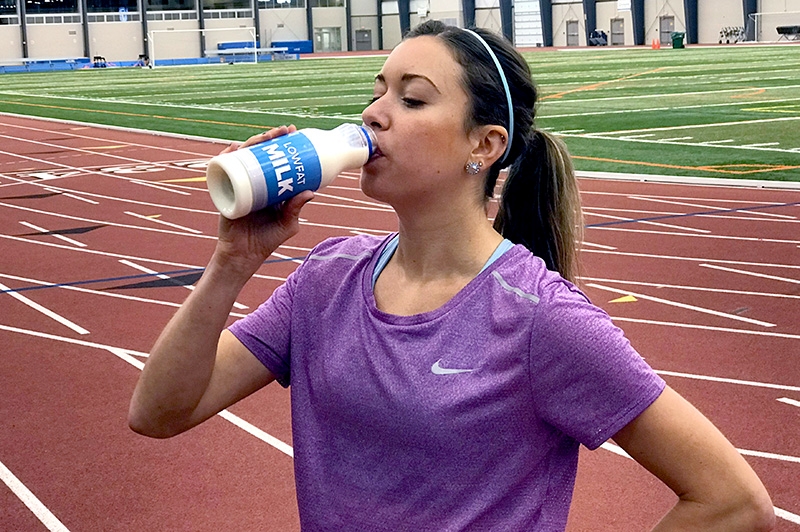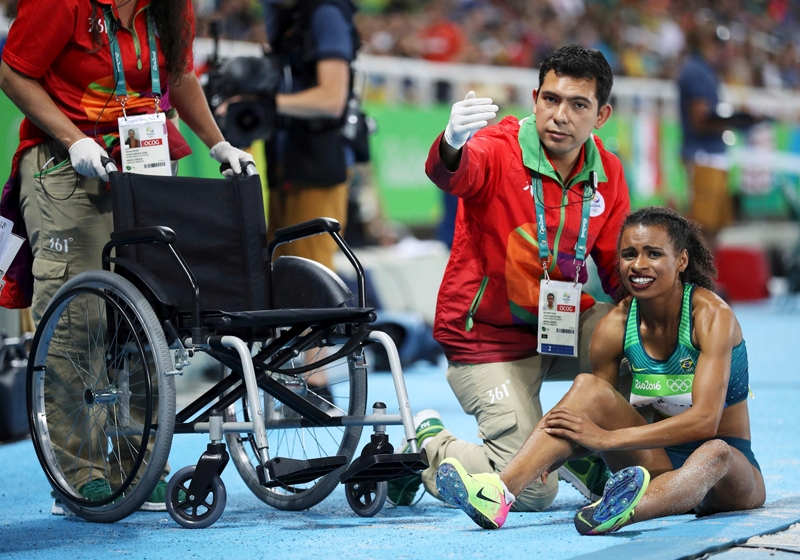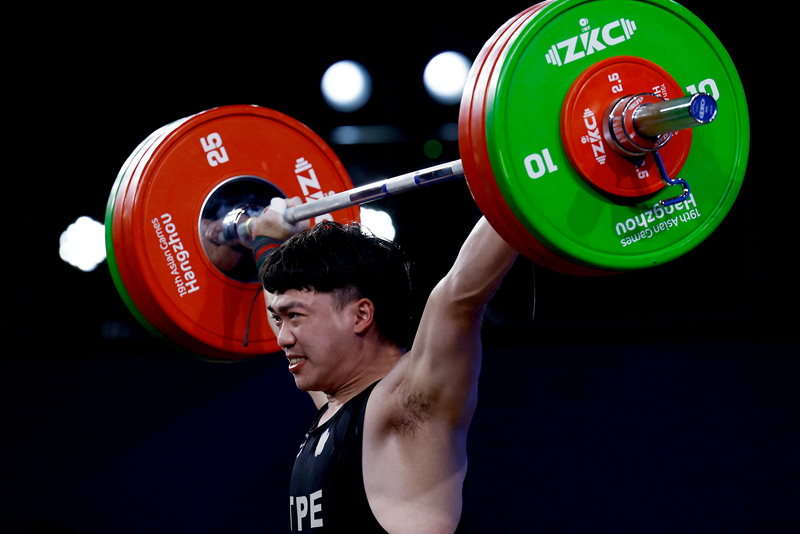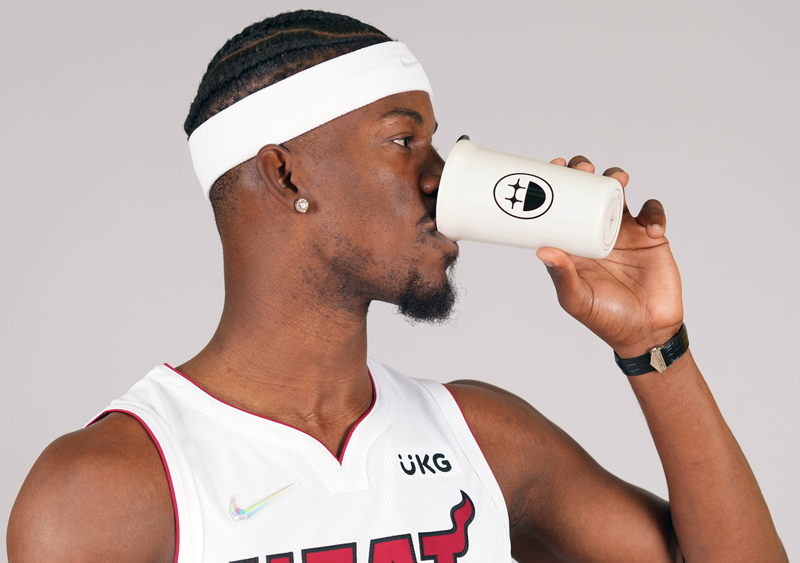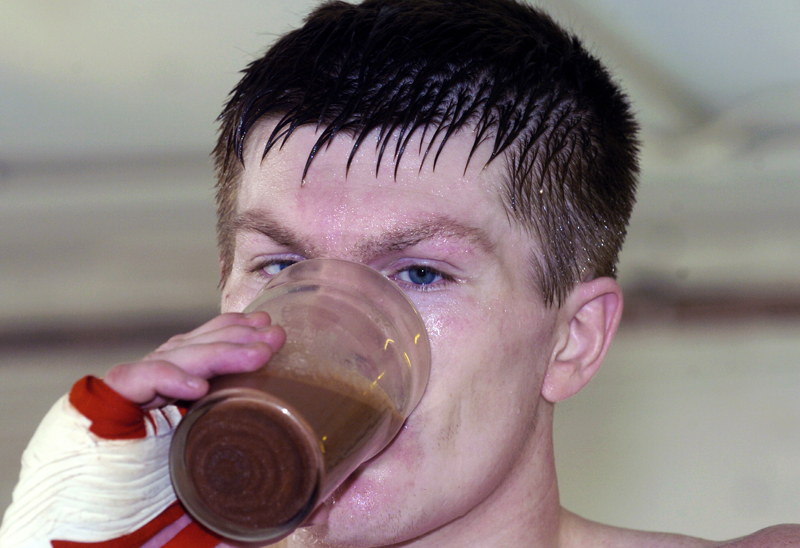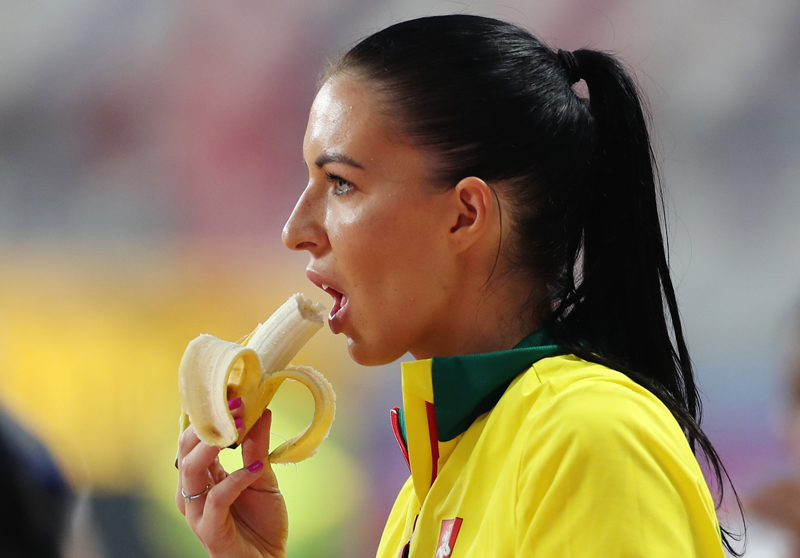You are viewing 1 of your 1 free articles. For unlimited access take a risk-free trial
Sports injury-2: a little help from your (nutrient) friends

In part one of this article, we explored the benefits - or otherwise – for athletes of manipulating dietary protein, fat and carbohydrate intake to accelerate recovery from injury. In part two, we investigate the potential benefits of vitamins, mineral and other micronutrients; can they help speed injury healing, and which nutrients are most effective?
As we explained in the first part of this article, when injury strikes, maximizing the speed of recovery is crucial for athletes seeking a speedy return to sport. In terms of nutrition, we concluded any strategy that can help curb excessive inflammation during the early stage of injury, or speed the repair and healing process in the subsequent stages is worthy of consideration.The importance of micronutrients
Given that the daily intake of micronutrients such as vitamins and minerals is several orders of magnitude lover than protein, fat and carbohydrate (ie measured in milligrams rather than grams!), how is it that these trace nutrients are still pivotal for optimum healing? Apart from calcium, which is needed in comparatively large qualities for bone formation, the reason is largely due to the fact that micronutrients function as activators of enzyme systems in the body. Enzymes can be regarded as ‘biochemical sparkplugs’, allowing essential chemical reactions to occur that would otherwise occur too slowly to sustain biological function, or not at all.A good example of this is the mineral zinc, which activates numerous enzymes in the body involved with protein (amino acid) turnover – for example, in the breakdown and synthesis of muscle tissue. One group of these enzymes is the ‘matrix metalloproteinase’ family (see figure 1). These enzymes are involved in the breakdown of extracellular matrix in normal physiological processes, such as embryonic development, reproduction, and tissue remodeling. The salient point here is that although the daily requirement for zinc is only around 15mgs (just fifteen thousandths of a gram) per day, even a mild shortfall in zinc intake will, over time, inhibit the efficiency of these enzymes, with a negative impact on protein turnover, and thus (potentially at least) wound healing.
Figure 1: Schematic representation of zinc-dependent enzyme (matrix metallopeptidase 13)

Enzymes are large protein molecules, synthesized in the body from amino acids. Many enzymes also contain a metal atom such as zinc, copper, iron, magnesium, manganese or cobalt, which plays an essential role in activating the enzyme to carry its function.
Micronutrients and the inflammation phase
When it comes to micronutrients and the inhibition of inflammation (phase-1 nutrition), there’s limited scientific evidence in the literature that supports their use. One possible viable anti-inflammatory micronutrient is not a vitamin or mineral, but an antioxidant phytochemical called curcumin. In fact, such is the potency of curcumin’s antioxidant and anti-inflammatory activity that scientists are currently investigating its potential to treat and prevent a wide array of degenerative and inflammation-related diseases(1-6).One area where curcumin is proving to be very effective is in the treatment of joint pain and arthritis (both rheumatoid and osteoarthritis). A number of studies have demonstrated that taken as supplement, curcumin can diminish joint pain and improve mobility compared to an inert placebo, and that these improvements are brought about by a reduction in joint inflammation(7). Indeed, there’s good evidence that curcumin may be as effective in reducing inflammation and pain as over-the-counter Ibruprofen(8).
A 2015 study investigated harnessing this property as a therapy for combating the pain of tendon repair after surgery(9).The researchers used a dietary supplement containing and Curcuma longa (and Boswellia serrata) in a population of subjects with a significant tendon tear treated by arthroscopy. The results showed that the curcumin-supplemented subjects demonstrated significantly lower overall pain scores than a placebo group during the first week post surgery.
While these results are encouraging, caution is required. A review study examined a range of so-called ‘nutraceuticals’ commonly recommended for the management of tendon injuries and conditions, particularly inflammatory conditions(10). These included nutrients such as curcumin, glucosamine and chondroitin sulphate, vitamin C, hydrolyzed type-1 collagen, arginine alpha-keto-glutarate, bromelain, boswellic acid, and methyl-sulfonyl-methane (MSM). A number of these studies showed a possible beneficial effect on inflammation, collagen synthesis, mechanical properties, analgesia, and maturation of collagen bundles. However, the researchers also concluded that in many cases, the methodological quality was poor, and in most of the studies, more than one supplement was administered at the same time – making it difficult to determine the effect of individual Furthermore, the interactions between nutraceuticals and medications taken by subjects are largely ignored, making it difficult to draw firm conclusions.
Micronutrients and the evidence for healing
Many studies point to the roles of certain micronutrients in supporting tendon and soft tissue growth and regeneration. However, while the logic is sound, the evidence presented is often more theoretical in nature; it’s still the case that there are very few studies based on properly controlled clinical trials upon which to make firm recommendations.A 2018 review study sought to ascertain whether amino acids/vitamins provide any influence on musculotendinous healing and if so, by which physiological mechanisms(11). Twelve studies met the criteria for inclusion: eight examined tendon healing and four examined muscle healing. All the studies used animal models, except for two, which looked at human trials.
The results suggested that vitamin C and taurine demonstrated indirect effects on tendon healing through antioxidant activity. Meanwhile, vitamin A and glycine showed direct effects on extracellular matrix tissue synthesis, and vitamin E showed an antiproliferative influence on collagen deposition. However, due to methodology flaws and the heavy reliance on animal studies, the researchers concluded that recommendations on their clinical use should be made with caution.
Another study looked at the general use of micronutrients in the context of tendon healing following injury(12). It concluded (rather vaguely) that ‘various nutrients such as proteins, amino acids (leucine, arginine, glutamine), vitamins C and D, manganese, copper, zinc, and phytochemicals may be useful in improving tendon growth and healing’ while adding ‘because many nutrients are required for tendon health, nutritional interventions involving multiple nutrients may be more effective than single-nutrient strategies, and more research on nutrition and tendon health is needed’.
Nutrients worthy of consideration
Despite the cautions and caveats above, there are some nutrients that would make sense in your ‘rehab nutrition’ program. These are nutrient whose use is supported by good clinical studies or where sheer logic dictates it simply makes sense to ensure they are well supplied in the diet.*Zinc nutrition – Given the role of zinc in protein turnover in the body, you might assume that it has been thoroughly researched in an injury healing context. However, while we know that a zinc insufficiency impairs wound healing in hospital patients following injury or surgery(13,14), and that supplemental zinc increases the growth rate and fat-free muscle mass gains in children with a limited diet(15,16), there’s little data regarding its role in terms of muscle tissue accretion following athletic injury. That said, the logic for ensuring an ample zinc status outlined above is compelling – even without clinical studies.
The best sources of dietary zinc tend to be high-quality protein foods such as lean meats (beef, liver, pork, chicken etc), shellfish, nuts and seeds, eggs etc. Dietary supplementation may also be useful. However, because of its ability to interfere with iron absorption, athletes should not take more than the recommended daily intake (around 11mgs per day) in the longer term, although higher intakes may be recommended in the short term during injury healing. Also, athletes who need to take iron supplements should ensure they are taken a different time of day from any zinc supplements – to ensure maximum iron absorption (ie free from interference from zinc).
*Vitamin D - Vitamin D is most known for its contribution to the mineralization of bone and maintenance of bone integrity. It also plays a role in calcium homeostasis. Unsurprisingly therefore, there’s good evidence that optimizing vitamin D nutrition is important. Studies on military recruits suggest that poor vitamin D status increases the risk of femoral and tibial stress fractures, and that vitamin D supplementation may help with fracture healing in soldiers presenting with stress fractures(17).
More generally, research suggests that in the wider population at large, those most at risk of fracture – the elderly – have a poor vitamin D status and that oral vitamin D supplementation between 700 to 800IUs per day reduces the risk of hip other non-vertebral fractures(18). Athletes suffering from fracture (stress or otherwise) should consider an evaluation of vitamin D status and supplementation where necessary. This is especially the case given that vitamin D insufficiency is known to be very widespread in athletes of many disciplines, especially during the winter months in the northern hemisphere(19-24). Readers are encouraged to see this more in-depth article on vitamin D for a more thorough description of the challenges in maintaining optimum vitamin D status.
Vitamin D may also help in tendon injury. The activated metabolite of vitamin D, (1a,25-dihydroxyvitamin D3), help proliferation and formation of key cells required for healing called osteoblasts. Likewise, vitamin D plays a significant role in the tendon-to-bone healing process by increasing the bone mineral density and strengthening the skeletal muscles. A review study looked at tendon-to-bone healing after rotator cuff repair surgery, which usually has a high failure rate(25). They concluded that vitamin D3 binds to vitamin D receptors involved in stimulating growth and proliferation, and that vitamin D3 has been shown to successfully influence bone and muscle healing, increasing the chances of a tendon-bone repair.
Another study analysed grip-strength recovery after a distal radius fracture in seventy women over age 50 years of age(26). Researchers sought to identify the factors that independently predicted grip strength recovery at six months after injury. While there was no significant correlation between baseline vitamin D status and grip strength recovery, the data showed that improving vitamin D status with vitamin D3 supplementation was significantly associated with better grip strength recovery at 6 months after injury.
*Calcium - Calcium and vitamin D are both needed to achieve and maintain bone health. Calcium should therefore also be considered an important nutrient in the context of injury prevention and recovery. There is very little data on athletes, injury and calcium nutrition. However, a randomzsed trial in female military recruits demonstrated that calcium/vitamin D supplementation reduced the incidence of stress fractures, and a study in young female runners demonstrated a reduced incidence of stress fractures and increased bone mineral density with increased dietary calcium intake(27). Findings from both studies suggest those who consumed greater than 1500 mg of calcium daily exhibited the largest reduction in stress fracture injuries.
In terms of calcium and injury recovery, one fairly recent study investigated the effects of calcium ß-Hydroxy-ß-Methylbutyrate (CaHMB), vitamin D, and protein supplementation on wound healing, immobilization period, muscle strength in older adult patients with hip fracture(28). This randomized controlled study included 75 older female patients with a hip fracture admitted to orthopedic clinics. The control group received standard post-operative nutrition while the study group received a supplement containing 3 grams of CaHMB, 1000IUs vitamin D, and 36 grams of protein, in addition to standard post-operative nutrition. The results were as follows:
- *Wound-healing period was significantly shorter in the CaHMB/vitamin D/protein group than in the control group.
- *The number of patients in the CaHMB/vitamin D/protein group who were mobile on days 15 and 30 was significantly higher than patients in the control group, who were mobile on days 15 and 30 (81.3% vs. 26.7%).
- *Muscle strength on day 30 was significantly higher in the CaHMB/vitamin D/protein group compared to the control group.
Conclusions and practical recommendations for athletes
The logic for the use of a number of micronutrients is compelling. However, the clinical data from scientific studies to support their use is far more limited. That said, we can draw some robust conclusions for injured athletes:- The wide numerous functions of zinc in protein turnover metabolism suggests that its status should be considered as important by athletes seeking the fastest recovery possible, despite the lack of specific studies.
- The use of a high-quality supplement is recommended such as zinc citrate, aspartate or gluconate, and taken away from any iron supplements. A supplemental intake of 11mg per day and not exceeding 40mg per day may be used to support injury healing.
- The evidence for the role of calcium and (particularly) vitamin D3 in injury healing and recovery is more robust and dietary modifications to improve the intake of these foods are recommended (see below).
- Athletes who are injured may also wish to consider a supplement supplying in the region of 1000IUs per day of vitamin D3 and 800mgs per day of calcium. During the winter period, vitamin D supplementation should be increased to 2000IUs per day.
- When pain is present in the early stages of an injury, curcumin supplementation may help reduced inflammation-related pain.
Foods naturally high in calcium and vitamin D
*CalciumMilk
Cheese
Yoghurt
Spinach
Tofu
Canned sardines
Canned salmon
Soybeans
Almonds
*Vitamin D
Salmon (fresh and canned)
Maitake mushrooms
Trout
Herring
Canned sardines
Whole milk (not skimmed)
Egg yolks
Butter
References
1. Eur J Pharmacol. 2016;784:192–8
2. Iran J Reprod Med. 2013;11:415–22
3. Neurochem Int. 2015;89:40–50
4. Nutrients. 2016 8. pii: E334
5. Int J Mol Med. 2016;37:329–38
6. Neurochem Res. 2016;41:3113–28
7. Drug Design, Development and Therapy 2016:10
8. Clin Interv Aging. 2014;9:451–458
9. Musculoskelet Surg. 2015 Sep;99 Suppl 1:S43-52
10. Muscles Ligaments Tendons J. 2016 May 19;6(1):48-57
11. Int J Sport Nutr Exerc Metab. 2018 May 1;28(3):294-311
12. Nutrition. 2016 Jun;32(6):617-9
13. Wounds 2017;29(4):102–106
14. Wounds 2016;29(2):56–61
15. J Nutr. 1998 Mar;128(3):556-62
16. Am J Clin Nutr. 2008 Jul;88(1):154-60
17. J R Army Med Corps. 2014 Mar;160(1):61-3
18. JAMA. 2005 May 11;293(18):2257-64
19. J Sports Med Phys Fitness. 2018 Mar 1. doi: 10.23736/S0022-4707.18.08122-7
20. Orthop J Sports Med. 2018 May 21;6(5):2325967118774329
21. Int J Sport Nutr Exerc Metab. 2017 Oct;27(5):399-407
22. Pediatr Exerc Sci. 2018 Feb 1;30(1):157-167
23. Nutrients. 2018 Jan 31;10(2). pii: E167
24. PLoS One. 2018 Apr 9;13(4):e0195284
25. J Inflamm Res. 2016 Jun 14;9:123-31
26. J Hand Surg Am. 2013 Mar;38(3):519-25
27. PM R. 2010 Oct;2(10):945-9
28. Nutr Clin Pract. 2016 Dec;31(6):829-835
Newsletter Sign Up
Testimonials
Dr. Alexandra Fandetti-Robin, Back & Body Chiropractic
Elspeth Cowell MSCh DpodM SRCh HCPC reg
William Hunter, Nuffield Health
Newsletter Sign Up
Coaches Testimonials
Dr. Alexandra Fandetti-Robin, Back & Body Chiropractic
Elspeth Cowell MSCh DpodM SRCh HCPC reg
William Hunter, Nuffield Health
Keep up with latest sports science research and apply it to maximize performance
Today you have the chance to join a group of athletes, and sports coaches/trainers who all have something special in common...
They use the latest research to improve performance for themselves and their clients - both athletes and sports teams - with help from global specialists in the fields of sports science, sports medicine and sports psychology.
They do this by reading Sports Performance Bulletin, an easy-to-digest but serious-minded journal dedicated to high performance sports. SPB offers a wealth of information and insight into the latest research, in an easily-accessible and understood format, along with a wealth of practical recommendations.
*includes 3 coaching manuals
Get Inspired
All the latest techniques and approaches
Sports Performance Bulletin helps dedicated endurance athletes improve their performance. Sense-checking the latest sports science research, and sourcing evidence and case studies to support findings, Sports Performance Bulletin turns proven insights into easily digestible practical advice. Supporting athletes, coaches and professionals who wish to ensure their guidance and programmes are kept right up to date and based on credible science.
